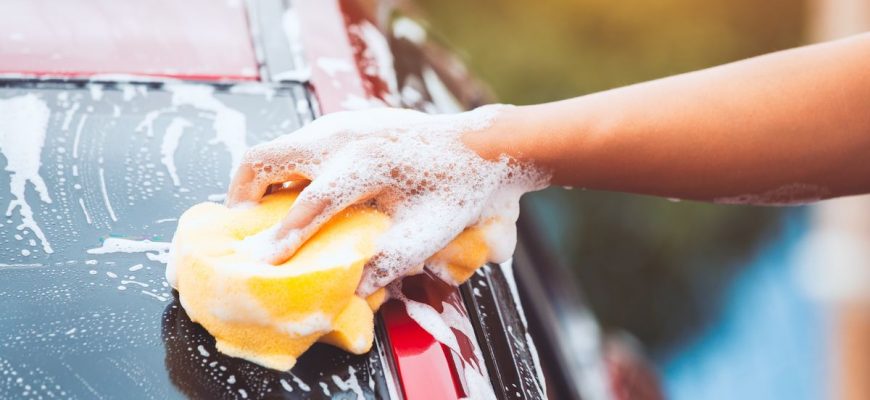The Importance of a Clean Car

The Importance of a Clean Car: Essential Post-Repair Care Tips for Australians
A gleaming car isn’t just about aesthetics; it’s a testament to a well-maintained vehicle, especially after undergoing repairs. For many Australians, their car is not just a mode of transport but a reflection of their personal or professional image. Following repairs, how you clean and maintain your car can significantly impact its appearance, longevity, and even its value. This guide will delve into why it’s crucial to keep your car spotlessly clean after repairs and how best to achieve that pristine condition.
The Benefits of Keeping Your Car Clean Post-Repair
Visual Appeal: First impressions matter, and a clean car makes a positive statement. After repairs, ensuring your vehicle remains spotless helps maintain the quality and aesthetics of the work done. Whether it’s a fresh paint job or a fixed dent, a clean car highlights the craftsmanship of your repair specialist.
Prevention of Damage: Dirt and grime aren’t just unsightly; they are your car’s silent enemies. Left uncleaned, these elements can etch into new paint, degrade sealants, and even introduce rust in repaired areas. Regular washing prevents these potential damages, preserving the integrity of the repair work.
Resale Value: Cars are investments, and resale value is crucial. A well-kept car, starting with cleanliness, can significantly enhance its market value. Consistent care post-repair not only maintains but can increase your vehicle’s resale price, making cleanliness a financially savvy practice.
How to Clean Your Car After Repairs
Immediate Care Post-Repair: When your car has just come out of the shop, it’s vulnerable. Start with a gentle hand wash using a pH-neutral soap to remove any particulates from sanding or painting that could scratch the surface. Avoid high-pressure hoses and rough brushes; instead, opt for soft microfiber towels and sponges.
Choosing the Right Cleaning Products: Not all cleaning products are suitable for a freshly repaired car. Look for high-quality, gentle cleaners that are designed for automotive use. Dynamic Paint N Panel recommend CAR GODS products – available in-store at 17 Magill Road Stepney.
DIY Cleaning Tips: Focus on a thorough but gentle wash. Begin with the roof and work your way down, rinsing thoroughly as you go to prevent soap from drying on the surface. Pay special attention to newly repaired areas — ensure they are cleaned with extra care to avoid introducing scratches.
Professional Cleaning Services: Sometimes, the best care comes from professionals. For comprehensive cleaning and maintenance, especially after significant bodywork, consider services like professional car cleaners and detailers. These professionals can provide deep cleaning and apply ceramic coatings that protect the repair for the long haul.
Special Considerations for Different Types of Repairs
Paint Jobs: New paint is susceptible to scratches and contaminants. After a repaint, ensure the car is washed in a shade, using soft wipers and mild cleaners. Allow the paint to cure fully—usually about two to four weeks—before applying any wax or sealant.
Interior Repairs: If the repairs involve the interior, such as upholstery or carpets, use vacuum cleaners and fabric cleaners designed for automotive interiors. These products help maintain the freshness of the repair without overpowering chemical smells or leaving residues.
Ongoing Maintenance and Protection
Regular Cleaning Schedule: Set a regular cleaning routine that suits your environment and usage. Cars in urban or coastal areas might need more frequent cleaning due to pollution and salt spray.
Protective Coatings: Applying a wax or ceramic coating can greatly enhance your car’s resistance to the elements. These products form a protective barrier over the paint, chrome, and even plastic parts, which helps keep the car clean and protected from UV rays, bird droppings, and tree sap.
Maintaining a clean car after repairs is not just about aesthetics; it’s about safeguarding your investment. By following these detailed care tips, you can ensure that your vehicle remains in pristine condition, reflecting both your personal pride and care. Embrace the habit of regular maintenance, and your car will continue to look as good as new, driving smoothly and retaining its value for years to come.
References
For further reading and to purchase the recommended products, see the articles below. Remember, a little care goes a long way in keeping your car in top-notch condition post-repair.
- How Do You Fix Factory Paint on a Car? An In-Depth Look at Paintless Dent Removal – This post explores techniques for repairing factory paint without needing a full repaint, a useful consideration after minor body work.
- Overcoming the Challenges of Vintage Car Collision Repairs – This article discusses specific considerations and care tips for vintage cars after collision repairs, which could be quite relevant for maintaining a clean and pristine appearance post-repair.
- Navigating the World of Aftermarket Parts in Collision Repair – Useful for understanding how aftermarket parts can affect the overall look and durability of car repairs.
- The Connection Between Driver Safety and Vehicle Maintenance – It highlights the importance of maintaining a vehicle not just for aesthetics but also for safety, tying in well with the theme of ongoing maintenance post-repair.
- Enhancing Your Car’s Longevity with Quality Collision Repairs: A Guide for Australians – This guide provides insights into how quality repairs and subsequent care can extend the life and performance of your vehicle.

